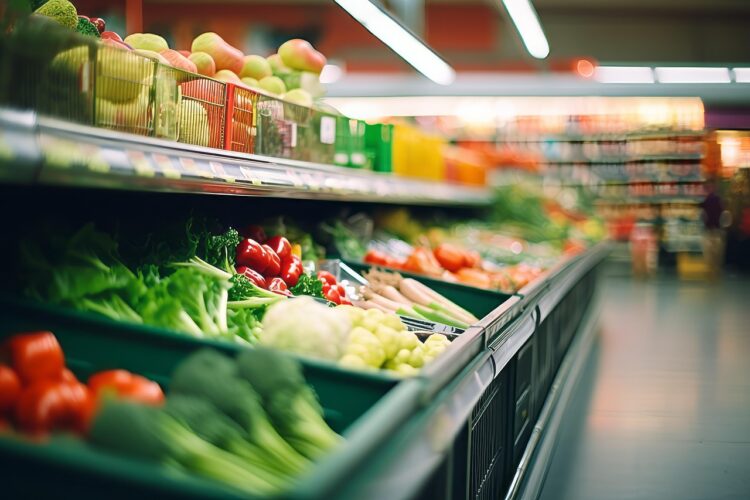August 19, 2025
The City of Seattle’s Fresh Bucks program works with local partners to help residents access fresh food.Pixabay
New research from the University of Washington shows that the City of Seattle’s Fresh Bucks program can improve fruit and vegetable intake and food security among low-income populations by providing financial support for buying healthy food.
The Fresh Bucks program works with local partners to help Seattle residents access healthy food. The program accepts applications from Seattle households with income less than 80% of the area median — $110,950 for a family of four in 2024. Recipients can use the $40 per month benefit to purchase fruits and vegetables at more than 40 retail locations throughout Seattle, including farmers markets, Safeway stores and independently owned grocery stores.
The study, published Aug. 19 in JAMA Network Open, shows that Fresh Bucks households experience a 31% higher rate of food security and consume at least three daily servings of fruits and vegetables 37% more often than those assigned to a program waitlist.
“I would classify both of those numbers as pretty large,” said Jessica Jones-Smith, co-author, UW affiliate professor of health systems and population health and of epidemiology and University of California, Irvine professor of health, society and behavior. “We don’t routinely see interventions that work that well. It’s a pretty big impact on diet in terms of what we can do from a policy perspective and expect to make a difference in food insecurity.”
Food insecurity, or the lack of access to nutritionally adequate foods, is linked to lower-income households and is often associated with poor nutrient intake, diabetes and hypertension. Diet quality, including fruit and vegetable intake, impacts the risk for premature disability and death from cardiometabolic disease, cancer and other causes. But fresh fruits and vegetables tend to be less available in lower-income neighborhoods and more expensive than processed foods.
“The UW’s study helps us understand how the City of Seattle’s Fresh Bucks program shows up in the day-to-day decisions of our enrolled households,” said Robyn Kumar, Fresh Bucks program manager at the City of Seattle Office of Sustainability. “Findings show that the healthy food access program makes a tangible difference for customers, significantly increasing food security and fruit and vegetable intake. We know these lifestyle changes have long-lasting benefits, and Fresh Bucks is helping to ensure that our most overburdened community members have equitable access to healthy foods and increased quality of life.”
In October 2021, 6,900 new applicants and existing beneficiaries applied to receive benefits in 2022. The total number of applicants exceeded program funding, so 4,200 households were randomly chosen to receive benefits. The remaining applicants were placed on a waitlist. The City of Seattle then mailed a follow-up survey to all 6,900 applicants in July 2022. The sample for this study consists of the 1,973 households who completed and returned the survey.
Researchers compared new applicants who received the benefit and new applicants assigned to the waitlist. They also considered the impact of losing Fresh Bucks by comparing returning applicants who were placed on the waitlist with those who continued receiving benefits. Losing the benefit reduced food security by 29% and resulted in households being 26% less likely to eat fruits and vegetables at least three times a day.
“The results were quite symmetric,” said Melissa Knox, lead author and UW teaching professor of economics. “The people who gained the program saw nearly the same benefit as what was lost by the people who lost the program. So, it seems like there are two things going on: One is that the program is helping people, and the other is these effects don’t magically sustain themselves without funding.”
Because of the health risks associated with poor diet, insurers have recently shown increased interest and investment in “food is medicine,” or FIM, programs, which include produce prescriptions and programs that provide free, healthy food for patients. Before FIM programs, federal grants funded “nutrition incentive programs” to increase healthy food access and food security.
But Fresh Bucks differs from other healthy food benefit programs in several ways, including focused enrollment within households disproportionately impacted by food insecurity and diet-related chronic disease, divesting enrollment from SNAP participation, enabling participants to redeem benefits at a large chain food retailer and smaller local stores and no required match spending — where participants receive additional benefits based on how much of their own money they spend.
“We clearly see that once this program goes away, people can no longer afford to eat these foods, as evidenced by the increase in fruits and vegetables when people are receiving the benefit, but the near symmetric decrease when benefits are lost,” Jones-Smith said. “I think that really drives home the fact that money or material resources are necessary for enacting this kind of dietary change.”
Other co-authors from the UW include Jamie Wallace, recently graduated doctoral student of health systems and population health; Barbara Baquero, associate professor of health systems and population health; and KeliAnne Hara-Hubbard, community research coordinator. The study was funded by the National Heart, Lung and Blood Institute of the National Institutes of Health.
For more information, contact Knox at knoxm@uw.edu.
Tag(s): College of Arts and Sciences • Department of Economics • Department of Epidemiology • Health Systems and Population Health • Jessica Jones-Smith • Melissa Knox • School of Public Health
